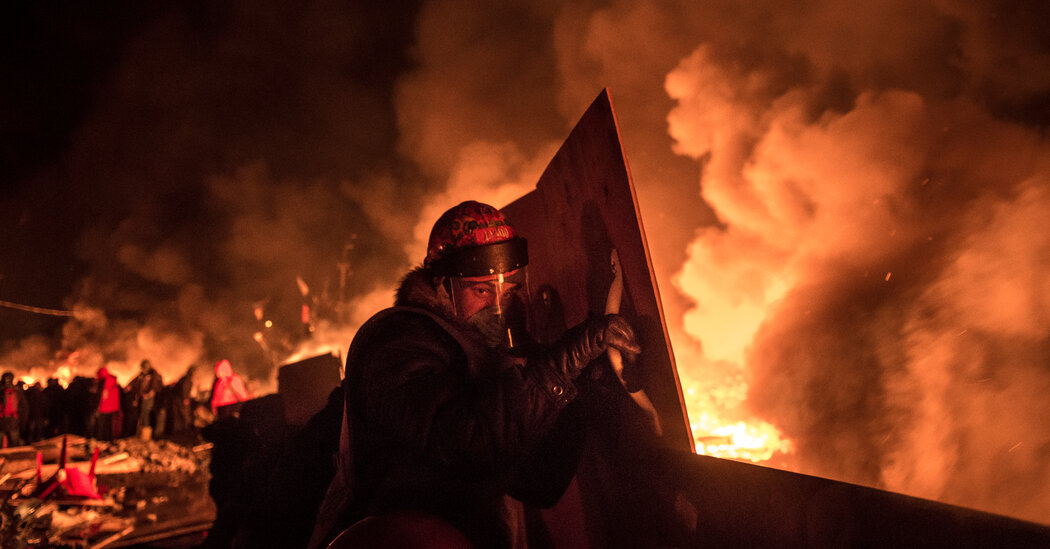Russia’s invasion came in two phases, many Ukrainians say: the first a decade ago, when it sent soldiers over the border in an unacknowledged military intervention, and the second when it began its full assault two years ago.
They were a ragtag army, fighting with baseball bats, Molotov cocktails and plywood shields. But for Ukrainians, the protesters who faced off with riot police on Kyiv’s main square a decade ago were the first soldiers in a war still raging today.
The demonstrators were part of the Maidan uprising of 2014, when Ukrainians took to the streets to protest the decision by President Viktor F. Yanukovych to forgo closer ties to Europe and instead more closely align Ukraine with Moscow. In the uprising’s violent, final days police killed more than 100 protesters.
Their portraits now adorn a wall of honor at St. Michael’s Golden-Domed Monastery in Kyiv. They are displayed first, ahead of portraits of soldiers killed in the simmering, eight-year conflict in Ukraine’s east that served as a prelude to Russia’s full-scale invasion on Feb. 24, 2022. And a museum dedicated to the street uprising identifies those who died on the square as the first soldiers killed in the war with Russia.
This connection Ukrainians make between the 2014 rebellion and the invasion two years ago reflects the long view of war that many citizens hold: They’ve been fighting Russia for 10 years, not two.


